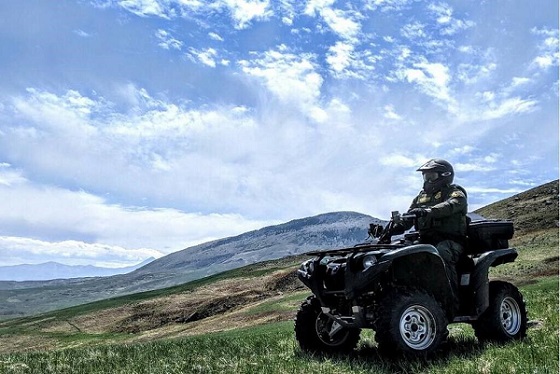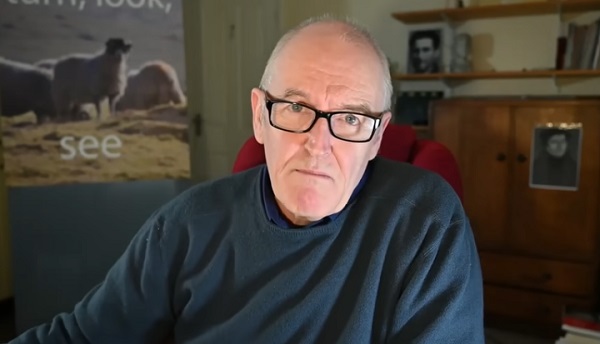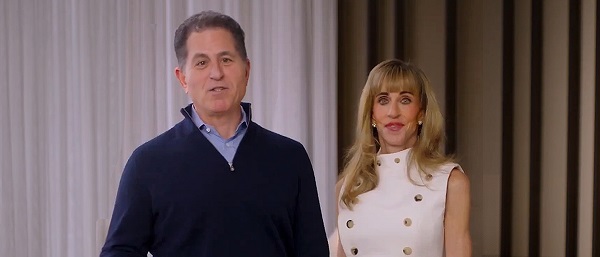Agriculture
How would you like it if someone came on to your land to build a pipeline?

How would you like it if someone came on to your land to build a pipeline?
This is one of the questions you’ve no doubt heard in the media lately. A common question from protestors and their supporters. It’s been posed to media reporters asking protestors why they’re trying to shut down Canada. It’s been used as a headline for editorials in big newspapers. If you live in a city or even a small community you’ve never had to deal with a company that wants to build a pipeline on your property. That seems to make this question a good one.
However I come from a farming community and it occurred to me that I might just know some people who’ve had experience with pipeline companies. So I decided to message a friend of mine. He used to be a pretty good hockey player when we were growing up. He played with a temper. Years may have passed but I know he’s definitely no push over. Devon is not the kind of guy who’d let anyone walk all over him. Even a big pipeline company.
Turns out Devon actually has lots of experience with pipelines. When he moved onto his acreage 20 years ago there were already 5 lines running under it. 2 more lines have been buried since. The last one came through just last year. If you look at the first map you can see a place called Herschel. Herschel is Devon’s territory. The map shows where Enbridge Line 3 Replacement cut through his property just last year. The second map shows just how many lines are following that same route.


When I discovered a new line had been put down in the last year I thought he’d have some fresh memories of how that affected his life. It was my chance to ask someone who actually knows “How would you like it if someone came on your land to build a pipeline?”
Me: “What happens during construction?”
Devon: “The only inconvenience during pipeline construction for us has been delays on the roads. They haven’t affected our home lives at all.”
Me: “What about animals? How long before things get back to normal in their world?”
Devon: “Wildlife doesn’t seem bothered at all.” Then he asked me “What’s normal?” – and he sent me a video taken right in his yard last summer.
Me: “OK. The animals appear not to mind. Does it affect the quality of your land?”
Devon: “We don’t farm the affected land, but Enbridge recovers the top soil and replants whatever vegetation you want. In our case, grass.”
Me: “What would happen to you if there was a spill on your property?”
Devon: “We have never had a spill, or know of anyone that has. They have given us contact information, and instruction if we ever encounter what we feel may be a spill. Several times a week they fly (over) the pipeline inspecting it.
Me: “Are you fairly compensated?”
Devon: “We have been treated very fairly by Enbridge.”
I have to admit I was hoping for even a tiny bit of drama in this back and forth conversation. Just like you would with any conversation. So I put my reporter skills to work and decided to finish by asking an “emotional” question. Certainly there has to be even a little bit of anxiety over having a pipeline carrying flammable material close to your home… right under your own property. Everyone knows there have been accidents. So the natural question is..
Me: “Wouldn’t you rather there were no pipelines under your land and close to your home?
Devon: “I was actually disappointed when they told us the line 6 replacement was being routed around our acreage because they felt it would be too close to the house. I actually have never thought about whether I would rather live where there’s no pipelines. They’ve never been an issue.”
If I had to conclude this and I do, I would say that it would seem my friend Devon is one of the vast majority of people who pay some type of price for the conveniences of modern society. In his case it’s doesn’t seem the price is very high. Maybe he thinks the compensation is actually worth it. No. He’s never experienced an accident. He doesn’t know of anyone who even knows anyone who has. Like the rest of us, he only knows they’ve happened because he pays attention to the news. The only real difference is Devon actually has a half dozen pipelines running across his property. As you can see from the second map above, the energy running through them keeps people in the Eastern United States and Eastern Canada, warm in their homes and mobile in their vehicles.
Here’s what pipelines look like for the vast majority of those who have to live with them. In Devon’s case, 20 years of living with pipelines and zero problems. He’s not going to claim nothing could ever happen. All he can say is that nothing has ever happened.
Read more on Todayville.com
Agriculture
Health Canada indefinitely pauses plan to sell unlabeled cloned meat after massive public backlash

From LifeSiteNews
Health Canada has indefinitely paused its plan to allow unlabeled cloned meat in grocery stores after thousands of Canadians, prominent figures, and industry leaders condemned the move.
Health Canada is pausing its plan to put unlabeled cloned meat in Canadian grocery stores, following public outcry.
In a November 19 update on its website, Health Canada announced an indefinite suspension of the decision to remove labels from cloned meat products after thousands of Canadians condemned the plan online.
“The Government of Canada has received significant input from both consumers and industry about the implications of this potential policy update,” the publication read. “The Department has therefore indefinitely paused the policy update to provide time for further discussions and consideration,” it continued, adding, “Until the policy is updated, foods made from cloned cattle and swine will remain subject to the novel food assessment.”
In late October, Health Canada quietly approved removing labels from foods derived from somatic cell nuclear transfer (SCNT) clones and their offspring. As a result, Canadians buying meat from the grocery store would have had no way of knowing if the product was cloned meat.
Many researchers have documented high rates of cloning failure, large offspring syndrome (LOS), placental abnormalities, early death, and organ defects in cloned animals. The animals are also administered heavy doses of antibiotics due to infections and immune issues.
Typically, the offspring of cloned animals, rather than the cloned animals themselves, are processed for human consumption. As a result, researchers allege that the health defects and high drug use does not affect the final product.
However, there are no comprehensive human studies on the effects of eating cloned meat, meaning that the side-effects for humans are unknown.
News of the plan spread quickly on social media, with thousands of Canadians condemning the plan and promising to switch to local meat providers.
“By authorizing the sale of meat from cloned animals without mandatory labeling or a formal public announcement, Health Canada risks repeating a familiar and costly failure in risk communication. Deeply disappointing,” food policy expert and professor at Dalhousie University Sylvain Charlebois wrote on X.
"By authorizing the sale of meat from cloned animals without mandatory labeling or a formal public announcement, Health Canada risks repeating a familiar and costly failure in risk communication. Deeply disappointing."
More on this week's Food Professor Podcast! https://t.co/UZTIcQzUN3
— The Food Professor (@FoodProfessor) October 30, 2025
Likewise, Conservative MP Leslyn Lewis warned, “Health Canada recently decided that meat from cloned animals and their offspring no longer needs a special review or any form of disclosure.”
“That means, soon you could buy beef or pork and have no idea how it was bred,” she continued. “Other countries debate this openly: the EU has considered strict labelling, and even the U.S. has admitted that cloned-offspring meat is circulating.”
“But here in Canada, the public wasn’t even told. This is about informed choice,” Lewis declared. “If government and industry don’t have to tell us when meat comes from cloned animals, then Canadians need to ask a simple, honest question: What else are we not being told?”
Health Canada recently decided that meat from cloned animals and their offspring no longer needs a special review or any form of disclosure. That means, soon you could buy beef or pork and have no idea how it was bred.
Other countries debate this openly: the EU has considered… pic.twitter.com/zCnqJOpvf3
— Dr. Leslyn Lewis (@LeslynLewis) November 14, 2025
Likewise, duBreton, a leading North American supplier of organic pork based out of Quebec, denounced the move, saying, “Canadians expect clarity, transparency, and meaningful consultation on issues that directly touch their food supply. As producers, we consider it our responsibility and believe our governing food authorities should too.”
According to a survey conducted by duBreton, 74 percent of Canadians believe that “cloned meat and genetic editing practices have no place in farm and food systems.”
Agriculture
Federal cabinet calls for Canadian bank used primarily by white farmers to be more diverse

From LifeSiteNews
A finance department review suggested women, youth, Indigenous, LGBTQ, Black and racialized entrepreneurs are underserved by Farm Credit Canada.
The Cabinet of Prime Minister Mark Carney said in a note that a Canadian Crown bank mostly used by farmers is too “white” and not diverse enough in its lending to “traditionally underrepresented groups” such as LGBT minorities.
Farm Credit Canada Regina, in Saskatchewan, is used by thousands of farmers, yet federal cabinet overseers claim its loan portfolio needs greater diversity.
The finance department note, which aims to make amendments to the Farm Credit Canada Act, claims that agriculture is “predominantly older white men.”
Proposed changes to the Act mean the government will mandate “regular legislative reviews to ensure alignment with the needs of the agriculture and agri-food sector.”
“Farm operators are predominantly older white men and farm families tend to have higher average incomes compared to all Canadians,” the note reads.
“Traditionally underrepresented groups such as women, youth, Indigenous, LGBTQ, and Black and racialized entrepreneurs may particularly benefit from regular legislative reviews to better enable Farm Credit Canada to align its activities with their specific needs.”
The text includes no legal amendment, and the finance department did not say why it was brought forward or who asked for the changes.
Canadian census data shows that there are only 590,710 farmers and their families, a number that keeps going down. The average farmer is a 55-year-old male and predominantly Christian, either Catholic or from the United Church.
Data shows that 6.9 percent of farmers are immigrants, with about 3.7 percent being “from racialized groups.”
National census data from 2021 indicates that about four percent of Canadians say they are LGBT; however, those who are farmers is not stated.
Historically, most farmers in Canada are multi-generational descendants of Christian/Catholic Europeans who came to Canada in the mid to late 1800s, mainly from the United Kingdom, Ireland, Ukraine, Russia, Italy, Poland, the Netherlands, Germany, and France.
-

 illegal immigration2 days ago
illegal immigration2 days agoWhile Trump has southern border secure, hundreds of thousands of illegal immigrants still flooding in from Canada
-

 Censorship Industrial Complex2 days ago
Censorship Industrial Complex2 days agoCanadian bishops condemn Liberal ‘hate speech’ proposal that could criminalize quoting Scripture
-

 Economy2 days ago
Economy2 days agoWhat the Data Shows About the New Canada-Alberta Pipeline Opportunity
-

 Energy2 days ago
Energy2 days agoThe Trickster Politics of the Tanker Ban are Hiding a Much Bigger Reckoning for B.C.
-

 Energy1 day ago
Energy1 day agoSenate votes to reopen Alaska Coastal Plain to energy leasing
-

 Daily Caller1 day ago
Daily Caller1 day agoTrump Orders Review Of Why U.S. Childhood Vaccination Schedule Has More Shots Than Peer Countries
-

 Alberta21 hours ago
Alberta21 hours agoA Memorandum of Understanding that no Canadian can understand
-

 Censorship Industrial Complex21 hours ago
Censorship Industrial Complex21 hours agoFrances Widdowson’s Arrest Should Alarm Every Canadian














